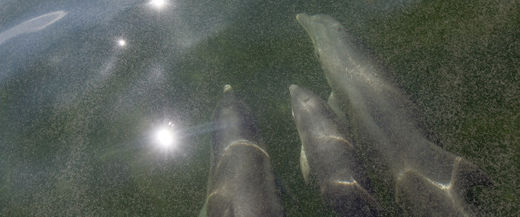
Four years after BP's Deepwater Horizon rig exploded, gushing some 4.9 million barrels of oil into the Gulf of Mexico, the region is rife with death and disease, according to a major U.S. study.
The peer-reviewed study, published in the journal Environmental Science & Technology, is the first of its kind since the devastating spill.
"I've never seen such a high prevalence of very sick animals," lead author Lori Schwacke of the Medical University of South Carolina noted. "There is disease in any wild population. We just haven't seen animals that were in such bad shape as what we saw in Barataria Bay."
Researchers captured 32 dolphins from the bay, a 24-km stretch near southeastern Louisiana, and deemed half of them to be seriously ill or dying.
Among the cases? Liver disease, crippling pneumonia and even a pregnant female carrying a dead fetus.
For its part, BP insists its hands are clean -- and has poured millions into rehabilitating the region.
In a company statement, BP said: "Symptoms observed in the study have been seen in other dolphin mortality events that have been related to contaminants and conditions found in the northern Gulf, such as polychlorinated biphenyls (PCBs), DDT and pesticides.
"Any increase in reported mortality observations after the spill may simply reflect an increase in the number of observers in the Gulf and an increased awareness among Gulf residents rather than an actual increase in dolphin deaths."
The study results, according to BP, are "inconclusive as to any causation associated with the spill."



Reader Comments
to our Newsletter